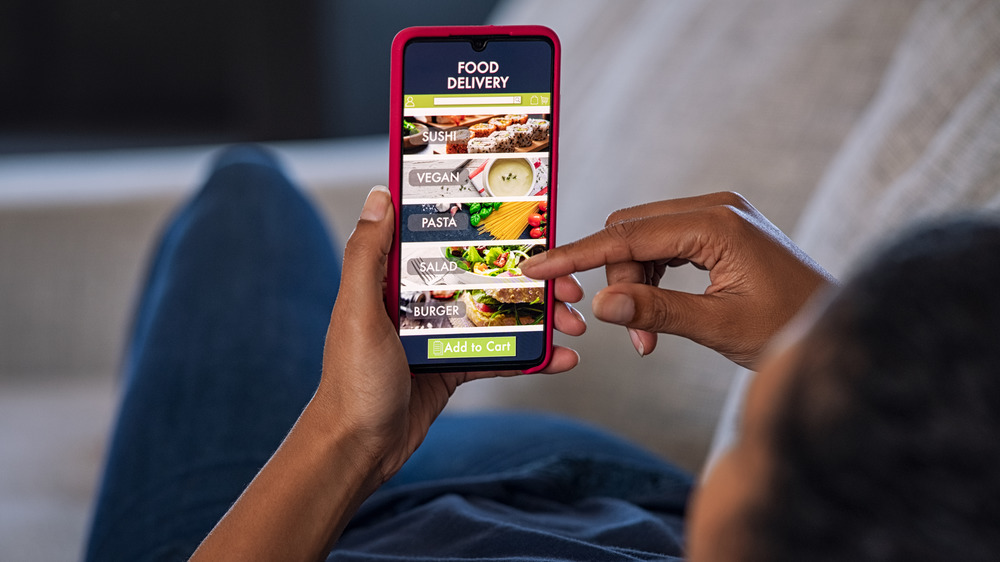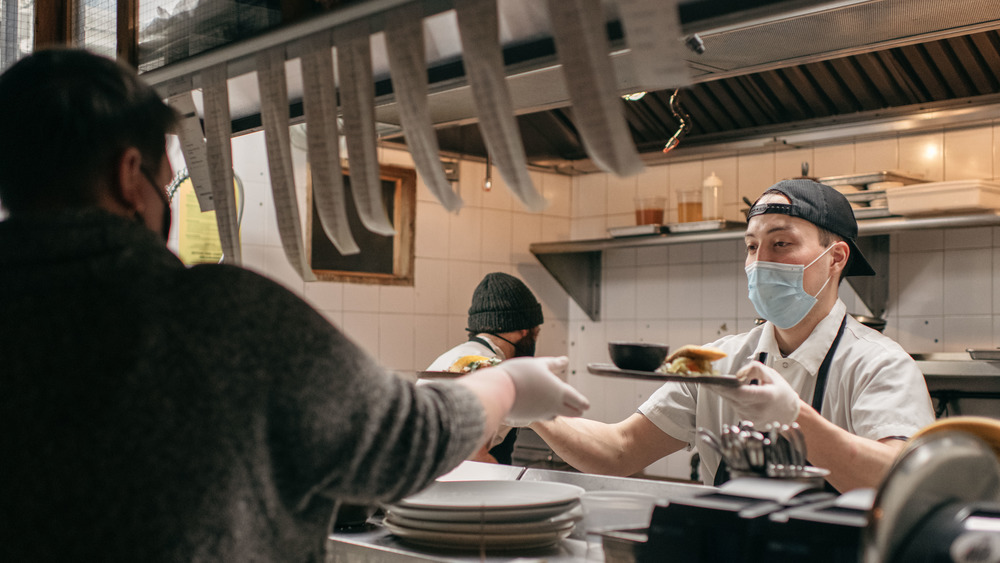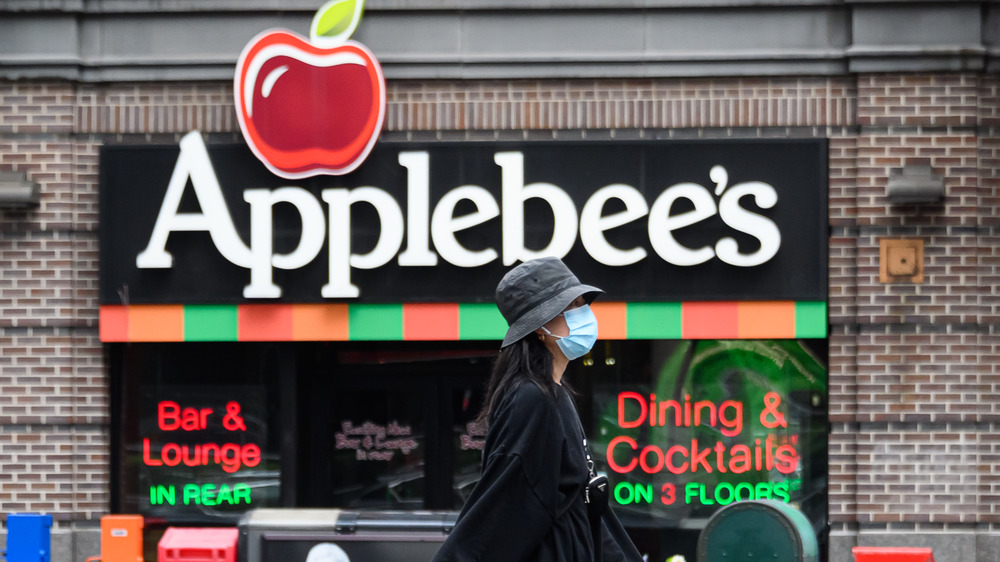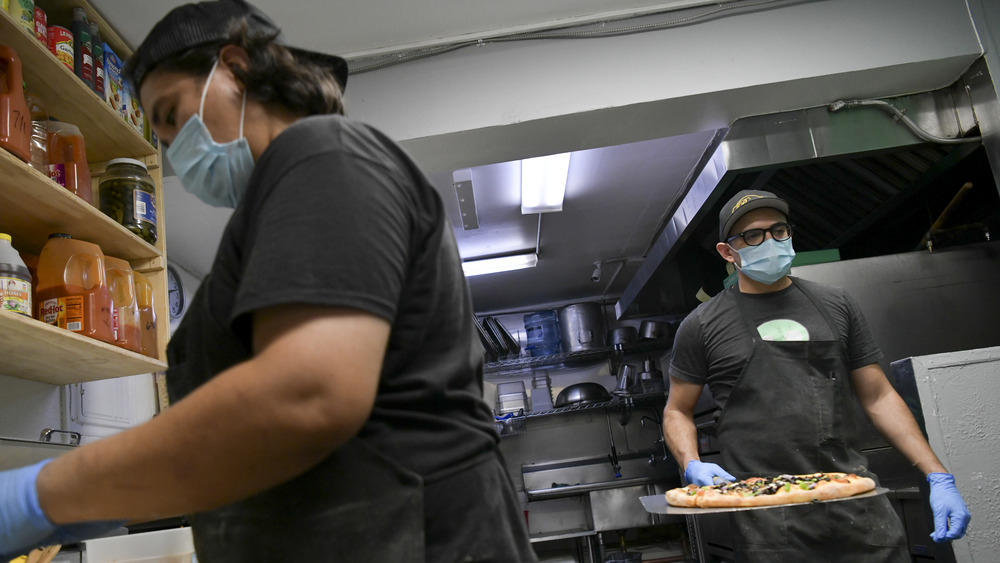The Real Reason There Are Suddenly So Many Virtual Food Brands
There is no doubt that 2020 will go down in the books as one of the most challenging years that the restaurant industry has ever seen. Bon Appétit estimates that the industry accounts for 25 percent of the total number of job losses seen during the coronavirus pandemic, as shelter-in-place orders struck both chain restaurants and mom-and-pop shops. But while some restaurants have failed, there are those that have thrived, particularly those who went into the pandemic with a solid take-out model.
Others, like Boston Chef Irene Li, think it was time for a new model to take root: "Some people want to save restaurants and some want to burn down the system. The movement for Black Lives Matter highlighted many of the industry's structural inequities. I'm on Team Burn It Down and Create Something New," she told Bon Appétit.
That "something new" could be in the form of dining establishments that only exist in the delivery world — such as ghost kitchens and virtual restaurants.
How virtual food brands work
Acclaimed Los Angeles chef Eric Greenspan tells Roaming Hunger that there is a difference between the two new trends that are making inroads into the food and beverage industry. "A ghost kitchen is where virtual brands are produced without a brick and mortar location," Greenspan explains, "They're facilities that are made solely for producing virtual brands." Virtual restaurants, on the other hand, have brick-and-mortar dining establishments; they utilize their facilities to craft exclusive, delivery-only menus.
Fledgling ghost kitchens work by renting facilities and creating a brand and then using that brand to get on Uber Eats and DoorDash. The hope is to get noticed, so these fly-by-night chefs can both attract and fulfill orders from the rented kitchen and through the app. Though in its early — and experimental stages — Greenspan says ghost kitchens (and virtual restaurants) are a sign that chefs, larger food companies, and their investors are betting on these virtual establishments as a sign of the future. In fact, according to Upserve, since 2014, digital orders and delivery have grown 300 percent faster than dine-in sales at restaurants.
Big restaurant brands are experimenting in ghost kitchens
Ghost kitchens aren't just going to be a food trend of the future. If you've been on Uber Eats or DoorDash recently, you might have already placed an order from a ghost kitchen and not even known that was the case, because some of the more well-established restaurant chains have already started dabbling in the trend. Cosmic Wings, which peddles chicken wings and a Cheeto-flavored sauce for delivery, has ties to about 1,300 Applebee's kitchens. Pasqually's Pizza and Wings is the not-so-secret digital identity of Chuck E. Cheese (via USA Today). And if you're craving a bite of chicken from the digital food brand Tender Shack, you'd be ordering from Bloomin' Brands, the listed company that owns Outback Steakhouse.
It doesn't end there. If you want your food with a celeb link, there is Tyga Bites, which has ties to Tyga the rapper, and Mariah's Cookies — which can legitimately claim to have links to pop megastar Mariah Carey. USA Today, which reported on the trend, says both brands have links to Virtual Dining Concepts which specializes in brands that cater exclusively to the delivery-only market.
Virtual food brands aren't as straightforward as they sound
The concept of virtual food brands might sound exciting because it potentially gives budding restaurateurs the chance to make themselves heard in a crowded environment — and without the overhead of starting up a typical restaurant. But as Eater points out, making it in the delivery-only space is as challenging as standing out in the brick-and-mortar world. "I don't think there's any brands that are successful in the long term by half-a**ing it, and I don't think anyone who has their doors open in this environment right now is half-a**ing anything," Spencer Rubin, owner and founder of the food chain Melt Shop, told Eater. "People's idea of quality and people's ability to execute vary dramatically. Even though some people may be giving it 100 percent, it still may not be good enough for the market."
But what it does mean, is that digital-only food brands are giving restaurateurs a chance to use their imaginations and spread their wings in the name of innovation. And whether you're a food truck owner, small brick-and-mortar restaurant, or a national chain, the delivery model is here to stay.



